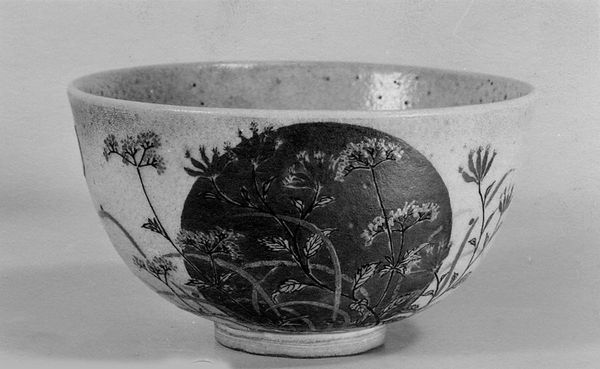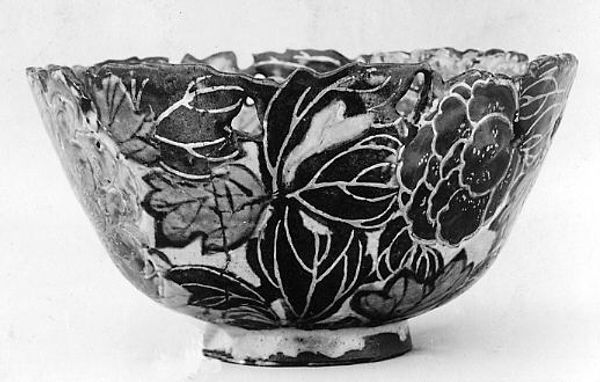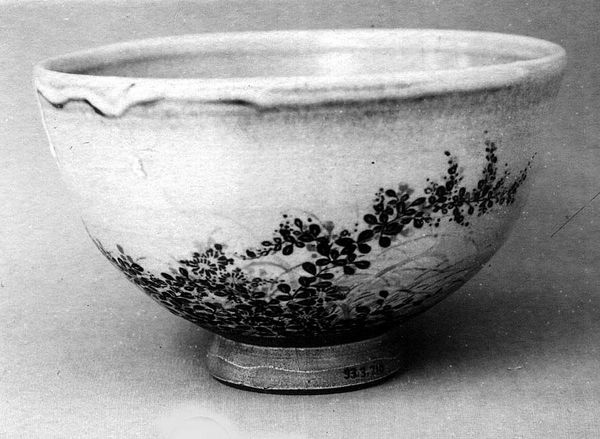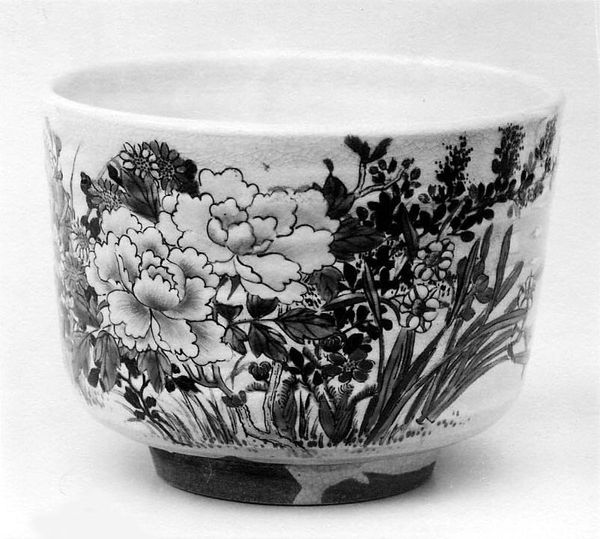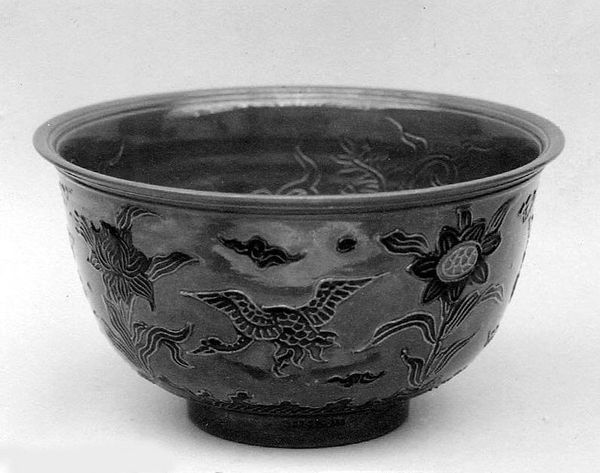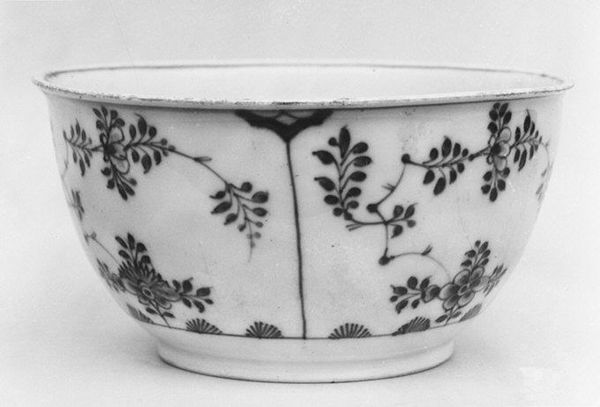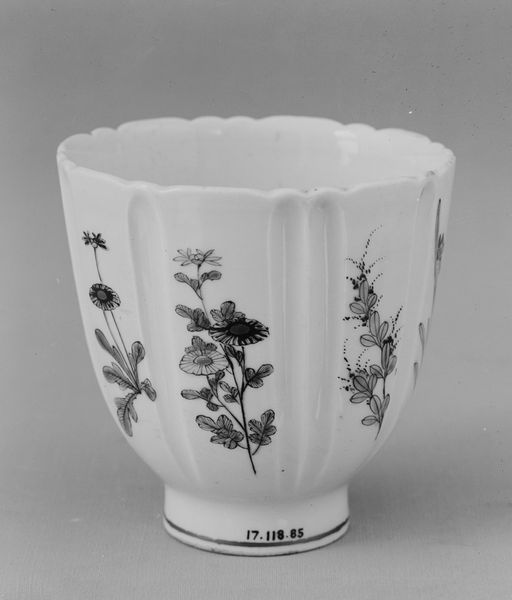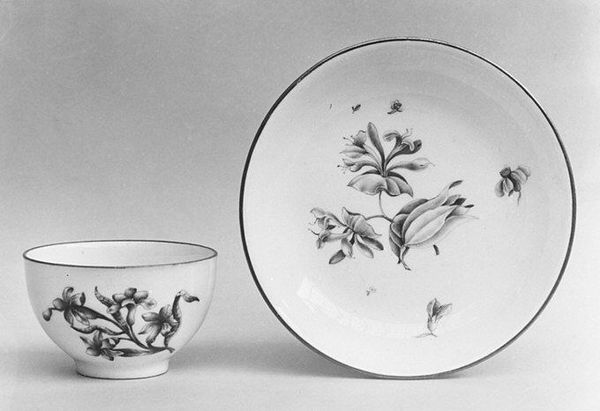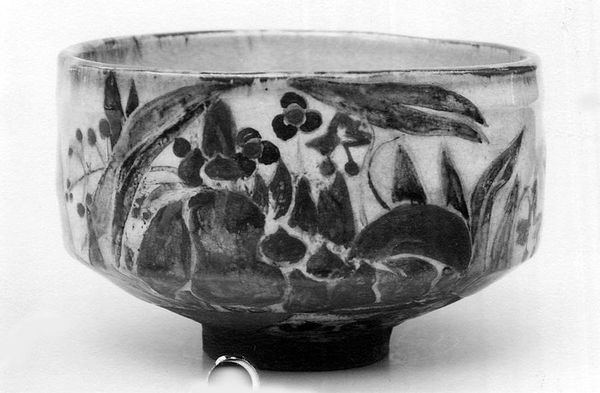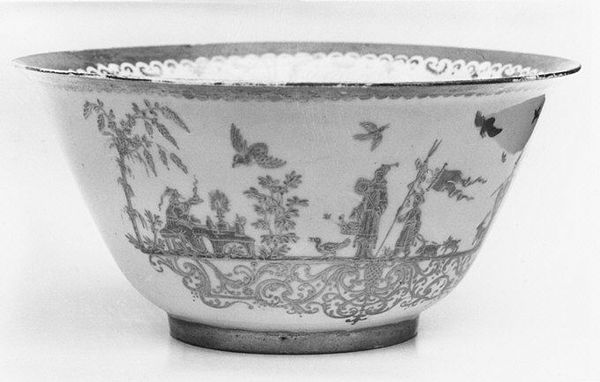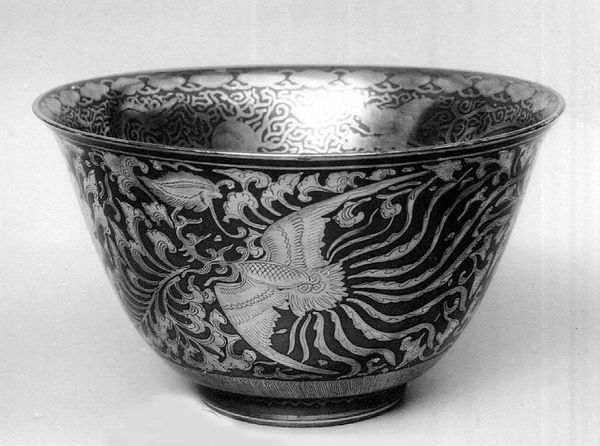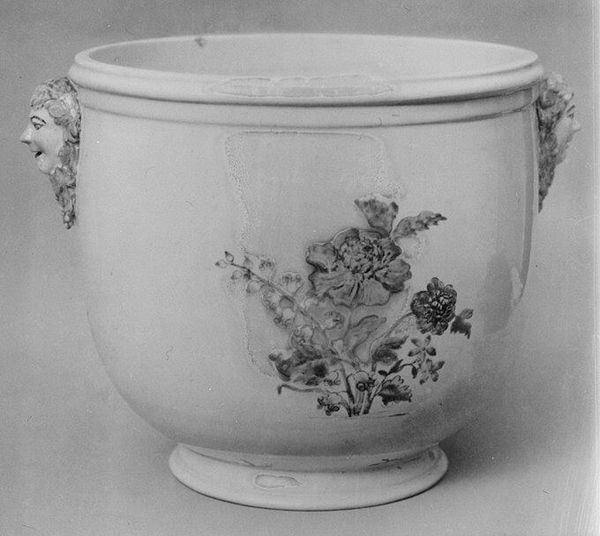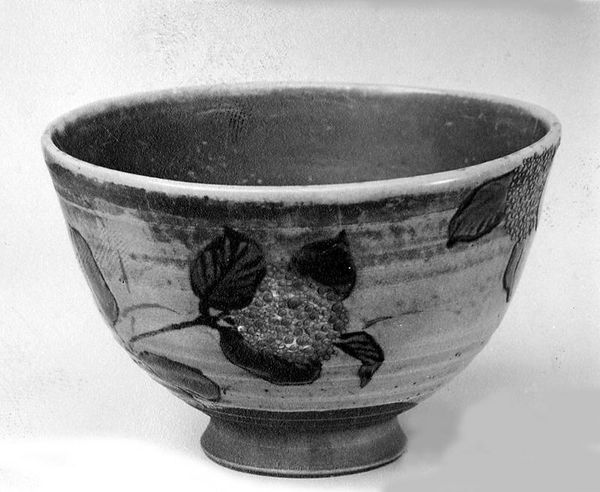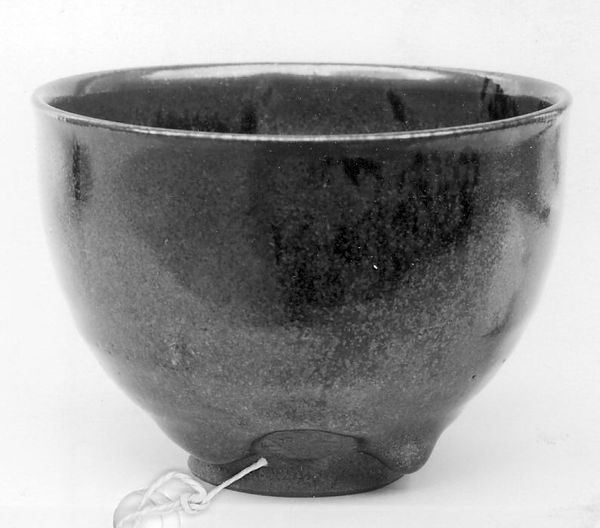
ceramic
#
3d sculpting
#
3d printed part
#
asian-art
#
ceramic
#
ring
#
japan
#
culinary art
#
black and white theme
#
appetizing
#
stoneware
#
macro photography
#
food art
#
food photography
Dimensions: H. 3 1/8 in. (7.9 cm); Diam. 4 3/8 in. (11.1 cm)
Copyright: Public Domain
Curator: Here we have a teabowl, crafted from stoneware around 1840 to 1860 by Nin'ami Dōhachi, or Takahashi Dōhachi II as he's also known. It currently resides at the Metropolitan Museum of Art. Editor: That glossy black… it's so simple, yet something about it pulls you in, like staring into a still pond at midnight. Then the almost ghostly white pine design—striking contrast, eh? Gives me a sort of tranquil melancholy vibe, which I wouldn’t typically associate with tableware! Curator: Well, the surface you describe as "glossy black" is actually a dark glaze that serves several important purposes. It’s not just aesthetic, although the play of light on its surface certainly enhances the viewing experience. More profoundly, such glazes often related to a wider movement to create affordable but well crafted pottery during the Edo period. Editor: "Affordable"? But the way the pine sprigs are rendered—almost as if etched in light! Does it give it some sort of value? What about the process? Curator: Indeed. That simple elegance reflects the values embraced within tea culture during the era, particularly a wabi-sabi aesthetic that elevated imperfection. Think about it: a vessel intended for a deeply ritualized, communal experience. Editor: Ritual… Yes. Makes sense. The more you see it, the more you imagine yourself using it. Curator: We see an artist working within a specific cultural framework—a history of tea practices, craft production, economic factors—all informing a work’s creation and reception. It also allows everyday people the chance to connect with refined culture. Editor: Hmmm, and when I look now… it's not as still as it was at first. It vibrates... The way it’s balanced and designed with meaning is almost like the tree sprigs contain coded knowledge. Curator: Exactly. That synthesis—functionality infused with both artistic skill and cultural significance—reveals so much more than just the piece itself. Editor: All that in one little bowl! Thank you for shifting my perspective and filling it up! I move into the future a bit differently after looking at such old objects.
Comments
No comments
Be the first to comment and join the conversation on the ultimate creative platform.
